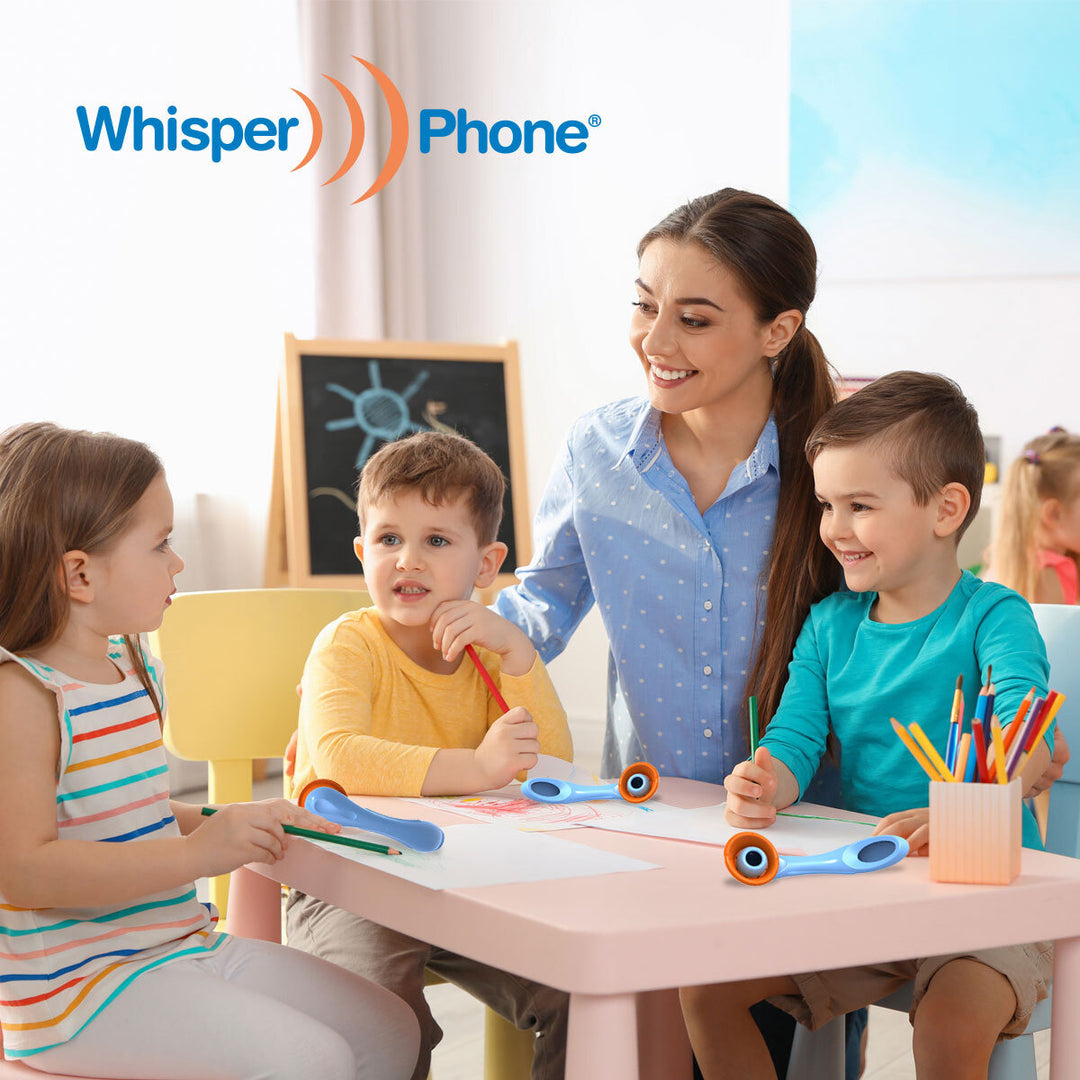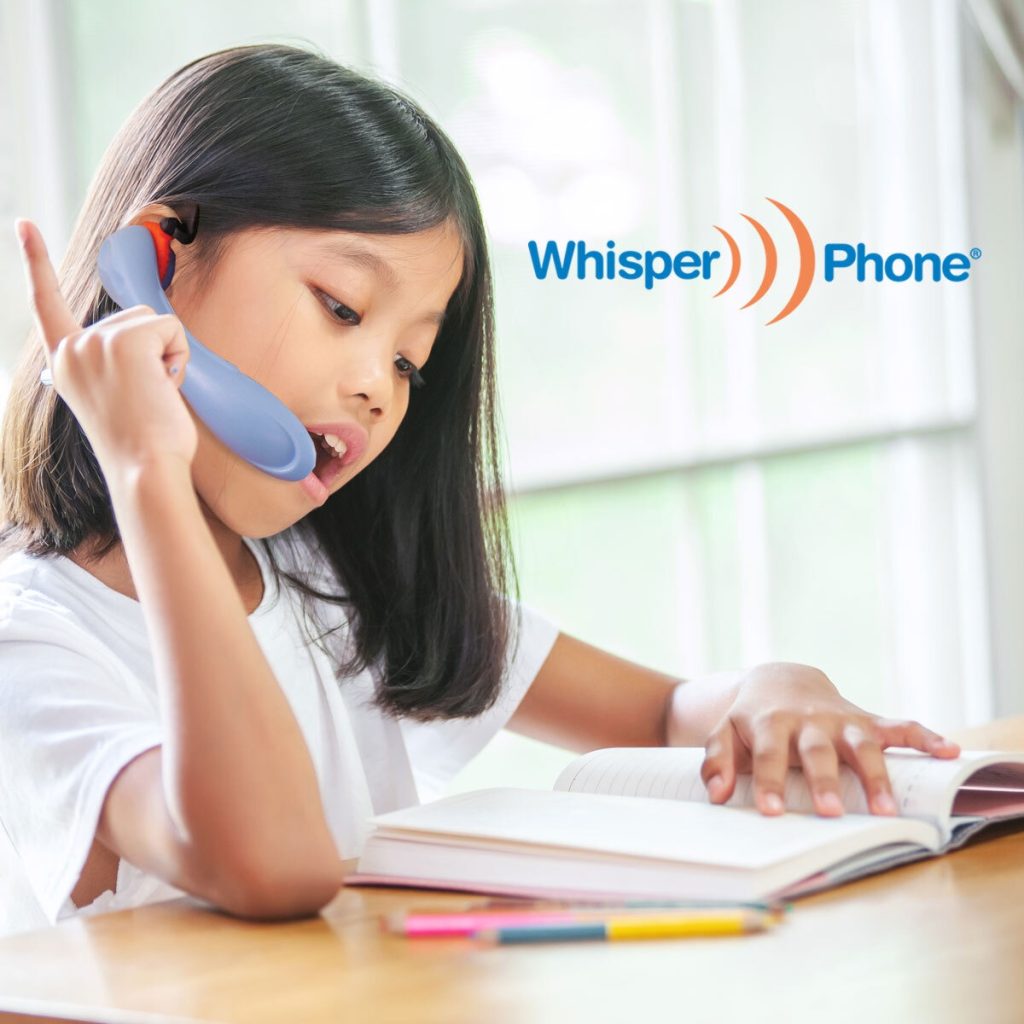
WhisperPhone is a focused listening tool that provides users with feedback on volume, pitch, and pronunciation of their voice. It is a helpful aid in teaching, speech therapy, or home use.
Reading and Spelling
A natural progression in the reading learning process is incorporating loud reading into everyday activities. Children, or users, initially recognize individual sounds in a word – phonemes. Once they become aware of phonemes, they begin to understand how these phonemes interact within words. WhisperPhone raises phoneme awareness, speeds up the learning process, and adds variety to common reading and writing activities.
In short:
✅ Stimulating and improving reading and writing skills
✅ Understanding what is read
✅ Development of vocabulary
✅ Development of phonemic awareness
✅ Blocking unwanted distractions during reading – enhancing focus
✅ Learning voice pitch control
Writing
When learning to write, it is common to make mistakes in spelling or omit words in a sentence. With the use of WhisperPhone, children can pronounce words aloud without distractions, allowing them to hear each sound clearly and accurately write it down. Pronouncing words aloud has a positive impact in 3 areas:
✅ Slowing down the writing pace, which allows for better focus on the writing exercise itself
✅ Reducint “skipped” words during writing exercises
✅ Developing vocabulary and spelling skills
Speech, Acting, and Student Debates
Theater requires actors to become new characters, which often means adjusting accents or using their voice to convey emotions. WhisperPhone helps actors practice voice modulation and also provides an excellent way to memorize their lines. On the other hand, practicing debates and speeches with WhisperPhone helps speakers avoid a monotonous voice and better understand their stance through vocal inflection.
Learning a New Language
When learning to speak a new language, we need to practice speaking it, and this is where WhisperPhone DUET, which can be used in teams, helps. The DUET captures, amplifies, and transmits students’ voices directly into their ears so they can hear themselves more clearly, as well as each other, thus enhancing the learning process. It also strengthens the auditory feedback loop by emphasizing unique sounds and punctuation of any language, making teamwork more enjoyable.

Learning Difficulties
ADHD – Attention Deficit Hyperactivity Disorder
🔹 Activity: Practicing reading aloud
🔹 Expected Outcome: Development of memory and comprehension
🔹 Why WhisperPhone helps: Provides multiple visual, auditory, and motor inputs, blocking distractions and improving the signal-to-noise ratio.
Speach Apraxia in Children and Adults
🔹 Activity: Repeating sounds, syllables, words, and sentences with varying speeds, intensity, and duration; expressive reading
🔹 Expected Outcome: Better articulation
🔹 Why WhisperPhone helps: Enhances signals in combination with tactile proprioceptive kinesthetic feedback, strengthening the neural signal to create stronger neural pathways – making it easier for the user to repeat the desired pronunciation consistently.
Difficulties with Auditory Discrimination
🔹 Activity: Repeating verbal descriptions (e.g., “Soup is on the table” vs. “Fly is on the table”) and identifying the correct image
🔹 Expected Outcome: Development of the ability to detect differences between similar-sounding words (soup-fly)
🔹 Why WhisperPhone helps: Increases the signal-to-noise ratio, reduces background noise, and highlights subtle contrasts between difficult-to-hear sounds.
Autism
🔹 Activity: Role-playing everyday life scenarios/naming pictures aloud.
🔹 Expected Outcome: Development of the ability to modulate voice intensity, speed, and duration.
🔹 Why WhisperPhone helps: Strengthens signals combined with tactile proprioceptive kinesthetic feedback, boosting the neural signal to build stronger neural pathways – making it easier for the user to repeat the desired pronunciation consistently.

Dyslexia
🔹 Activity: Practicing reading aloud
🔹 Expected Outcome: Development of memory and vocabulary
🔹 Why WhisperPhone helps: Provides stronger auditory input and blocks distractions, improving the signal-to-noise ratio so the student can hear phonemes more clearly and self-correct effectively.
Auditory Processing Disorder
🔹 Activity: Distinguishing words with similar sounds and completing rhymes
🔹 Expected Outcome: ncreased consistency when reading and pronouncing targeted words
🔹 Why WhisperPhone helps:Increases the signal-to-noise ratio, reduces background noise, and emphasizes the difference between hard-to-hear contrasts between similar sounds.
Aphasia
🔹 Activity: Reading aloud, verbal problem-solving, describing images
🔹 Expected Outcome: Improved control over verbal expression and recognition of pronunciation errors
🔹 Why WhisperPhone helps: Increases the signal-to-noise ratio, which aids in focus and concentration on verbal output. This leads to the recognition of errors and encourages self-correction.
Nonverbal or Limited Verbal Users
🔹 Activity: Free play with cars, airplanes, and other toys
🔹 Expected Outcome: Increased sound production and imitation of nonverbal sounds
🔹 Why WhisperPhone helps: Enhances sound production and increases auditory feedback.

Selective mutism
🔹 Activity: Creating sound effects during listening to a story being read aloud or while playing
🔹 Expected Outdome: Production of sounds near a group of people
🔹 Why WhisperPhone helps: Strengthens sound production and increases auditory feedback, encouraging the child to enjoy their own sounds without focusing on the presence of others.
Prosodic Difficulties
🔹 Activity: Repeating sounds, syllables, words, and sentences with varying speed, intensity, and duration; expressive reading
🔹 Expected Outcome: Comparison of prosodic patterns of language and development of awareness of one’s own prosody
🔹 Why WhisperPhone helps: Strengthens auditory feedback, making the user’s speech clearer to themselves.
